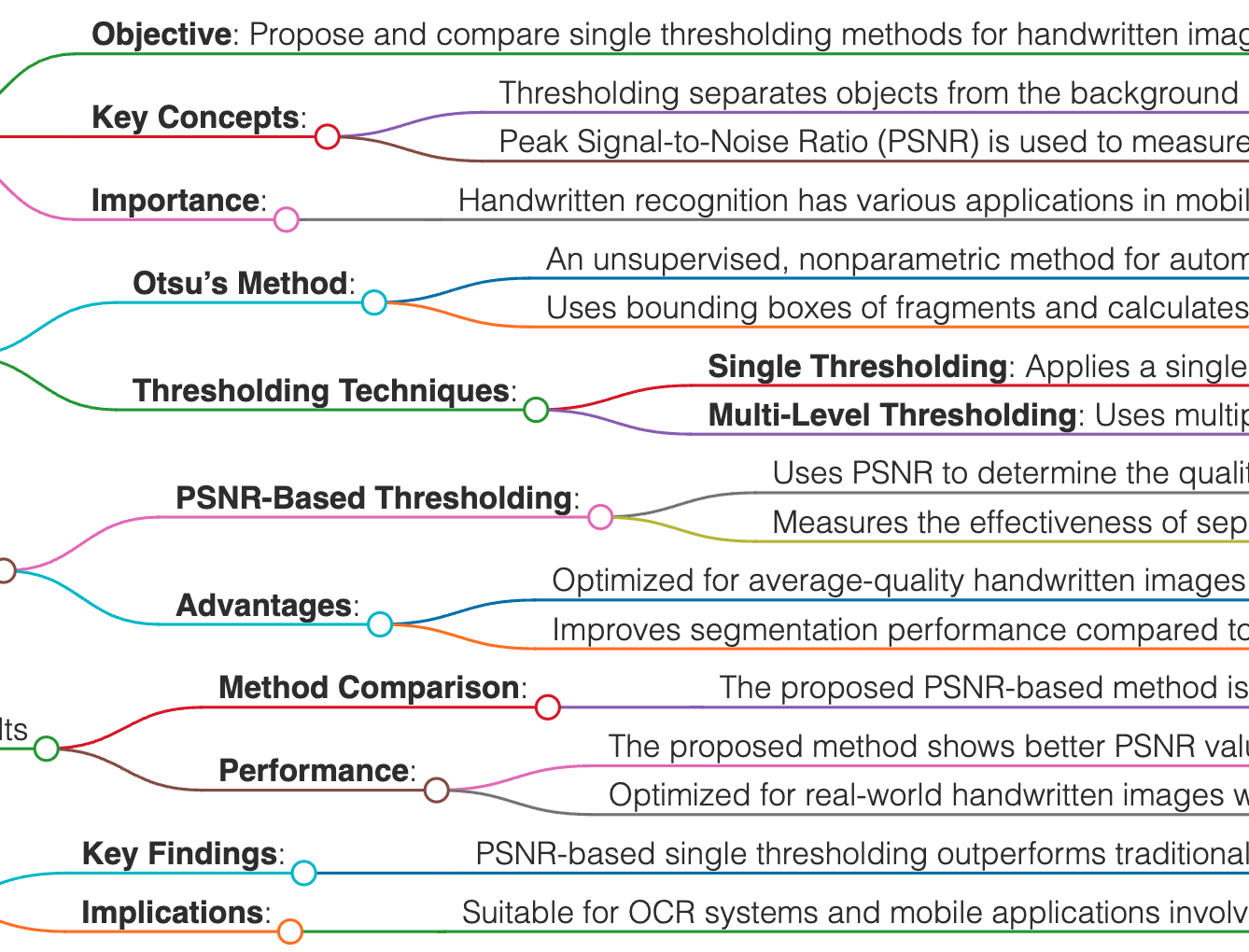Comparison_single_thresholding_method_for_handwritten_images_segmentation
https://www.pirahansiah.com/farshid/portfolio/publications/Papers/Comparison_single_thresholding_method_for_handwritten_images_segmentation
PDF Download My Conference Paper

Comparison Single Thresholding Method for Handwritten Images Segmentation
1. Introduction
- Objective: Propose and compare single thresholding methods for handwritten image segmentation.
- Key Concepts:
- Thresholding separates objects from the background in images.
- Peak Signal-to-Noise Ratio (PSNR) is used to measure image quality.
- Importance:
- Handwritten recognition has various applications in mobile devices and OCR systems.
2. State of the Art
- Otsu’s Method:
- An unsupervised, nonparametric method for automatic threshold selection.
- Uses bounding boxes of fragments and calculates global thresholds by maximizing class variance.
- Thresholding Techniques:
- Single Thresholding: Applies a single threshold value to the entire image.
- Multi-Level Thresholding: Uses multiple threshold values for segmenting complex images.
3. Proposed Method
- PSNR-Based Thresholding:
- Uses PSNR to determine the quality of image segmentation.
- Measures the effectiveness of separating objects (characters) from the background in handwritten images.
- Advantages:
- Optimized for average-quality handwritten images.
- Improves segmentation performance compared to other methods.
4. Experimental Results
- Method Comparison:
- The proposed PSNR-based method is compared with Otsu’s method and other techniques.
- Performance:
- The proposed method shows better PSNR values, indicating superior image segmentation quality.
- Optimized for real-world handwritten images where object-background separation is crucial.
5. Conclusion
- Key Findings:
- PSNR-based single thresholding outperforms traditional methods like Otsu’s in segmenting handwritten images.
- Implications:
- Suitable for OCR systems and mobile applications involving handwritten text recognition.